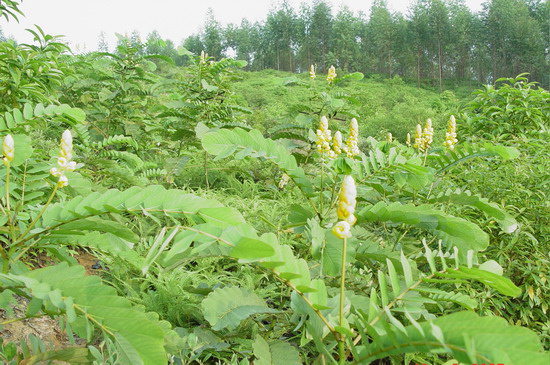

CO2, CH4 and N2O are all important greenhouse gases, which mainly come from soil of forest ecosystems. At present, it is a highlight to research mechanisms of greenhouse gases from forest soil. To determine the effects ofunderstory removal and Cassia alata addition on emission of soil greenhouse gases, Dr. LI Haifang, instructed by Prof. XIA Hanping and Prof. FU Shenglei from CAS South China Botanical Garden, conducted a study on soil greenhouse gases emissions in four plantations (Eucalyptus urophylla plantation, Acacia crassicarpa plantation, 10-native-species-mixed plantation, and 30-native-species-mixed plantation) in the CAS Heshan Hilly Land Interdisciplinary Experimental Station.
The results show that the four plantations are sink or source for CH4. Concretely, soils usually act as the sink for CH4 in E. urophylla plantation and A. crassicarpa plantation, while act as the source in 10-species plantation and 30-species plantation. However, the four plantations mainly are source for CO2 and N2O. The fluxes of soil CO2 stay at a high level during the rainy season and then decrease in the dry season in the four plantation types. Soil CH4 and N2O flux vary widely in the rainy season, while keep relatively stable during the dry season. N2O fluxes from E. urophylla plantation are significantly lower than those from the other three plantations during the experimental period. Soil CO2 fluxes under C. alata addition treatment tend to be enhanced in all the four plantations, having higher values in C. alata addition than in CK. Soil CO2 flux rates are higher under understory removal treatment compared to CK in E. urophylla plantation and A. crassicarpa plantation, but are lower in 10-species plantation and 30-species plantation. The decrease of soil CH4 flux rate is observed in understory removal relative to CK in every plantation. The value under C. alata addition treatment tends to be enhanced in E. urophylla plantation and A. crassicarpa plantation, while it decreases in 10-species plantation and 30-species plantation. Understory removal and C. alata addition also increase N2O fluxes in all the four plantations.
These research results were published recently in two international journals, Soil Science and Plant Nutrition (2010, 56: 541-551) and Journal of Environmental Science (2011, 23(6): 949-957).

30-species plantation plot.

Cassia alata, an addition species under the plantations.

